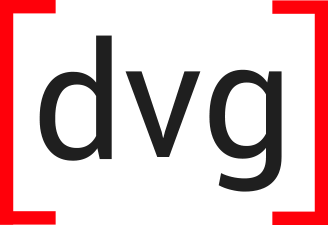Bitcoins are more trustworthy than retail banks. According to the most recent study of Landor Pulse, confidence among retail banks such as Wells Fargo, are steadily declining. With a 23 percent trust rating, it is clear that consumers have not fully recovered from the 2007-2008 financial crisis, and are struggling to build confidence. This is mainly due to the perception that financial institutions prioritize their motives first, rather than customer welfare and traditional products no longer serve the needs of the predominantly digital market. With the decline in brand perception, how can banks rebuild trust with their customers?
Start with data storytelling.
What is storytelling?
Storytelling is the process of establishing a connection with the customer to bring them on a journey that companies want them to experience. Through this, clients form a personal connection with the brand, helping to build or rebuild a product or service. Storytelling enable companies to engage with consumers on an emotional level, helping them fulfill their needs. In this process, businesses leverage stories that are compelling and factual enough by reflecting important lessons and common values that are close to the customer. They also utilize big data to combine customer information with storytelling to understand what drives and leads the market. Through this, storytelling with data can be used to refine a brand strategy, optimize efforts and create campaigns that will rescue declining brands. Data-driven stories attract a particular kind of social media attention that can spread cross-platform due to its capability to describe a value proposition in a concise, compelling and visually appealing way.
Examples of good storytelling
Successful data visualization storytelling help transform complex information into something that customers can easily understand. They are capable of weaving data and visualizations into a narrative leaving the audience with valuable insights.
An excellent example of this is Google Trends’ advertisement where big data on commonly used search questions such as women in the army, peace, transgender issues, the rebuilding of Nepal, was used to create a smart brand campaign about their brand. Google Trends provides daily graphs, charts, and stories about what information are people searching across the world.
Another useful data visualization storytelling material is Bloomberg’s data storytelling about climate change. Here, the company utilized data from NASA from 1880 to 2014 and created an interactive chart that invited readers to explore what are the common causes of global warming.
Last but not the least good data storytelling example, is Linked-In’s use of infographics to deliver a narrative that readers can consume in just a few minutes. Here, the company used a data-fueled story about how to effectively engage the millennial workforce. The infographic is optimized to fit on small screens and can be shared across various social media platforms.
How to do storytelling with data?
Effective Data visualization storytelling enables companies to illustrate a process, illuminate trends, support an argument, drive emotions and drive an interactive experience.
Narrative
When implementing data visualization storytelling, it is useful to start with a narrative. It is an account of connected events presented to the consumer in sequence. In data visualization storytelling, this means a combination of graphics, potential videos, and words. From the narrative, companies can start organizing the structure and flow.
Structure and Flow
Structure refers to the internal framework that holds the story together, which could tap into corporate values, processes, and standards. Flow, on the other hand, is how the story will move. This should identify how firms are going to present the information that they have to the audience.
Visual Communication
The last step is visual communication. Storytelling with data should be compelling enough to create reader-driven experiences. Here it is useful to use some tools like GeoTime and Tableau for enterprises and Medium.com for SMEs. GeoTime allows annotated stories within visualizations using a text editor and bookmarking interface. On the other hand, Tableau lets users review, collate and export key points for visual analysis. It also supports construction and web-based publication of interactive visualizations which is very useful in data-rich domains such as finance and sports journalism. Finally, Medium.com is a free application that doesn’t only allow story writing but also attachment of photos and sharing to social media. Other than these reporting tools, storytelling with data can also take other forms like an infographic, case studies, white papers, articles, brochure, and presentations.
Data storytelling and branding
Storytelling is one of the most powerful ways to breathe life back into your brand. Products and services can be given identities through capturing and sharing the stories of your market. Through storytelling with data, you can take your target audience on a journey that you yearn them to experience, enticing them to purchase. Data storytelling can help save a company’s declining brand perception through publishing content, marketing and advertising campaigns that focus on what consumers need. Leverage your data to know customers’ common interests, problems; and even the way they search and talk about your brand. Utilize tools and various forms of charts and most importantly, don’t forget that 90 percent of all information transmitted to our brains is visual. This means that 80 percent of customers retain what they see, and only 20 percent of what they read remains. With this information at hand, craft a story with more emphasis on what customers can see rather than what they can read.



